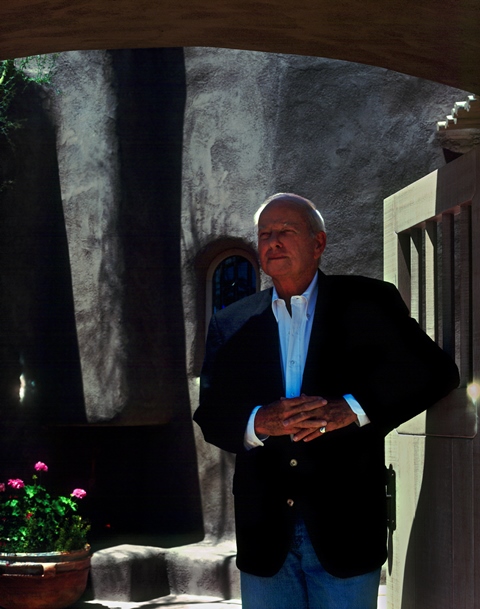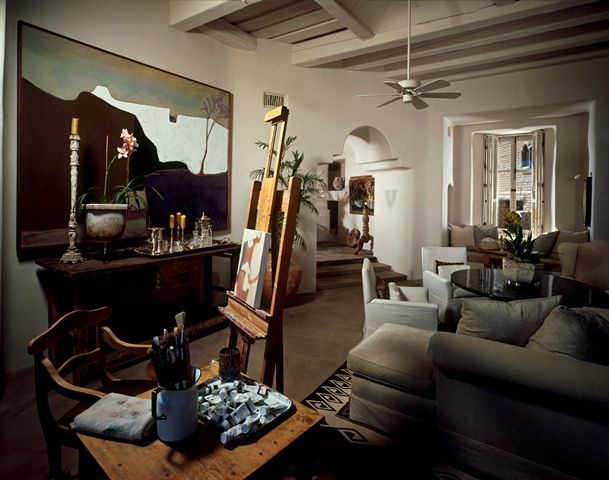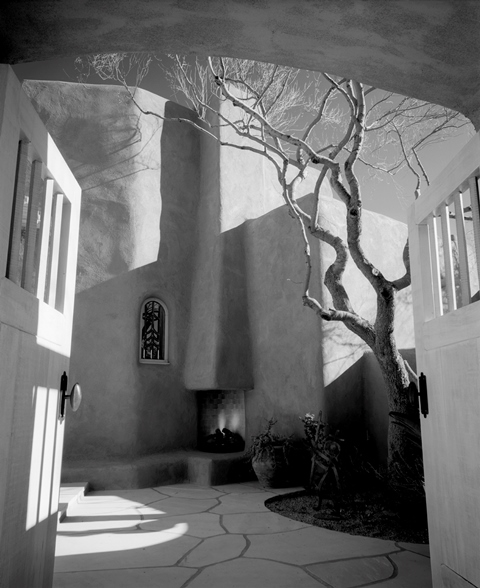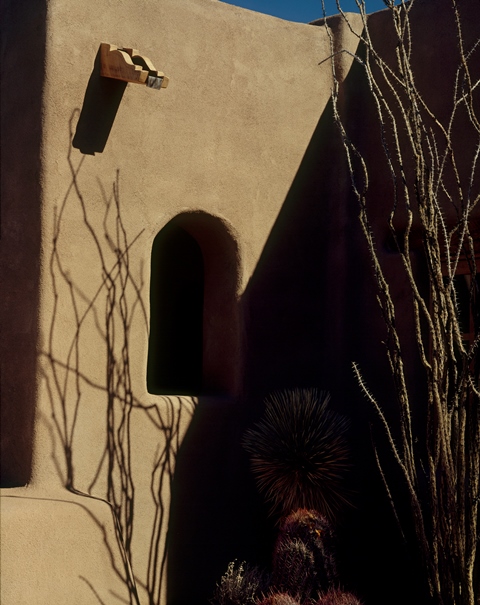
Valley interior designer Nancy Kitchell met Jo Ann and Bill Tull in the early ’70s when she was working with William Benner and Patrick Maas, founders of the acclaimed Scottsdale-based Est Est, the Valley’s oldest interior design studio, now owned by Tony Sutton, ASID.

“I remember a particularly grand party at Bill and Pat’s house, a wonderful Lon Megargee built around 1925,” Kitchell recalls. Megargee was a Valley artist who built and lived in another home that became the acclaimed Hermosa Inn, Paradise Valley.
The costume party celebrated Twelfth Night, the 12th and final one after Christmas. “Bill and Jo Ann did not disappoint. Their costumes were fabulous. Bill came as Merlin the Great Wizard,” says Kitchell, who opened her design firm in 1980 and is now a partner with Christopher Brusnighan in KITCHELL · BRUSNIGHAN Interior Design Associates, Scottsdale. “Merlin was perfect for Bill. There was always a bit of magic to him,” she adds.
Almost 16 years after his death, others are remembering the magic of William (Bill) F. Tull (1924−2000), who painted bold minimalist works, still very much in demand, and designed sculptural homes incorporating Pueblo, Moorish and Territorial influences, often with handcrafted signature elements.
Tull and Phoenix contractor John Mechem also helped to change rules that had prevented building with adobe in Arizona for years. For this and his other achievements, Tull became a Phoenix Home & Garden “Master of the Southwest” in 1990. Scott Burdick, co-owner and managing partner of Wiseman & Gale Interiors, the 50-year-old design studio in Old Town Scottsdale, got to know Tull when growing up in the Valley.
“Our families were friends, and his two daughters, Jana and Jennifer, were close friends in grade school and high school,” he recalls. “Later in my childhood, I came to understand his work: his amazing homes and his paintings. I remember thinking to myself as a kid that I would like to have a career like his. I admired his talent very much.” Jana and Jennifer still live in the Valley.
Today, Wiseman & Gale continues to sell his sought-after paintings, which beautifully complement today’s taste for Contemporary styling, Burdick says.
“Bill’s art was truly his first love, but the house designs were so in demand he was not able to spend enough of his later years to paint,” says Jo Ann, who lives in Scottsdale. “Bill brought art to architecture and architecture to art. He was an artist/designer who left his mark in both fields.”

The Home as Sculpture
Because he was not registered as an architect, he contracted several certified architects to draft building plans, including the late Jim Coady, his draftsman for many years. “Bill always drew his floor plans and elevations by hand,” Jo Ann recalls.
Later paintings were influenced by his adobes. “His adobe homes, for example, featured windows that framed trees to become ‘art,’” she says. “I think, as do others, the sculptural design of Bill’s buildings is artwork in itself. Everything in Bill’s designs was connected with the earth through softness and naturalness.”
“Bill was hands on during construction to make sure all walls were what he had envisioned with his artist’s eye. He also preserved the trees on the site and selected new trees for his projects to complement the houses. His homes ‘grew from the earth.’”
Tull’s custom designs were built in Desert Mountain, Desert Highlands, Paradise Valley, Pinnacle Peak, Cave Creek and the Adobes de la Tierra at The Boulders in Carefree. Outside of Arizona, his homes are in Texas, for singer George Strait; in Santa Fe at Las Campanas; Las Vegas, Nevada; and, in California at Palm Desert, Carmel by the Sea, Santa Barbara and La Jolla.
In 1968, Tull invested $1,000 from an art show held in the family’s rented adobe to buy three acres in Paradise Valley for $15,000 to build his first family home. As the costs to build exceeded what the bank would lend him, he sold a painting of Jo Ann for $3,000 to actor William Holden, Jo Ann recalls.
Kitchell remembers working with Tull on the Barnes home in the Boulders in the ’90s: “It was one of his best projects in my estimation, a joy to live in,” she says.
“Bill was an artist first and very nearly painted his projects in place,” she adds. “If a fireplace or a window did not suit him in space, he had no hesitation of making changes to complete his vision.”
Wiseman & Gale worked with Tull on a variety of projects through the ‘90s, in particular associates Anne Gale, Sue Calvin and Patty Burdick, who collaborated with him on his final project in Desert Mountain, completed after his death.
“Bill was an incredible and unique talent,” Burdick says. “His homes are romantic, without being kitsch or predictable Southwest. An artist architect.”
He’s happy to see Tull’s homes bought and renovated during the last 10 or so years. “Although the Pueblo adobe style is somewhat ‘out’ right now, his homes are the exception. The architecture is so strong and so timeless,” he says. “The new owners are lovingly restoring them –– instead of changing them architecturally.”

A Normal Childhood
Tull was born in Normal, Illinois, and studied art and architecture at the University of Illinois. Even as a child, the Southwest attracted him, although he spent some of his early career in advertising and as an artist in New York City before becoming a home designer and builder of adobe homes in the Valley of the Sun.
After Tull’s family moved to Champaign, Illinois, when he was a child, every Sunday his parents would drive past a small white adobe house he had come to enjoy. This established a lifelong love for adobe construction, which continued when he moved to Phoenix.
As a result of this, he brought back to the area the construction of adobe homes, which hadn’t been built in 53 years because they were considered inferior to those built with wood and brick. With Mechem, he worked to change the code; the adobe style was approved in 1979.
His new adobe bricks no longer contained straw as in pioneer days but an asphalt emulsion that satisfied local cities’ demands for structural stability. “Combining his art with architecture, Bill designed thick-walled ‘sculptures for the desert,’” Jo Ann says.
He was also influenced by Native Americans, their art, homes and philosophy. He and his two sons, Bill Jr. and Greg, learned the hoop dance and performed it in full costume during his New York years, Jo Ann says. “We had the hoop dance performed at his memorial service in 2000 at the Desert Botanical Garden in Phoenix.”
Many know his homes by Tullian signature elements such as carved corbels; decorative tin cabinet fronts; stained glass he designed; ceilings accented with vigas and latillas; rounded corners; sculptural fireplaces; stepped wall heights; saguaro rib detailing; and unique lantern cone-shaped light covers handcrafted from cement and plaster.
“Bill also loved using old doors, so he designed and had made special front doors for his homes, using mesquite or walnut, even metal for a house in the Adobes de la Tierra at The Boulders,” she says.
The Tull home legacy is strong: “He was an artist who visioned upon seeing the building site just exactly where and how the house would be placed on the lot,” she says. “His homes were pure art.”
Images courtesy of Jo Ann Tull